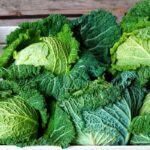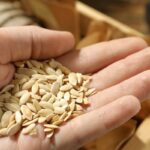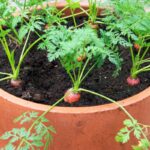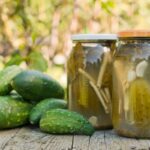Cucumbers are refreshing and versatile vegetables that are a staple in many cuisines. While they are commonly grown outdoors in gardens, it is entirely possible to grow them indoors, allowing you to enjoy a fresh supply of cucumbers year-round, regardless of the weather.
Growing your cucumbers indoors is also a great option if you live in a flat or an apartment, or if you have limited outdoor space.
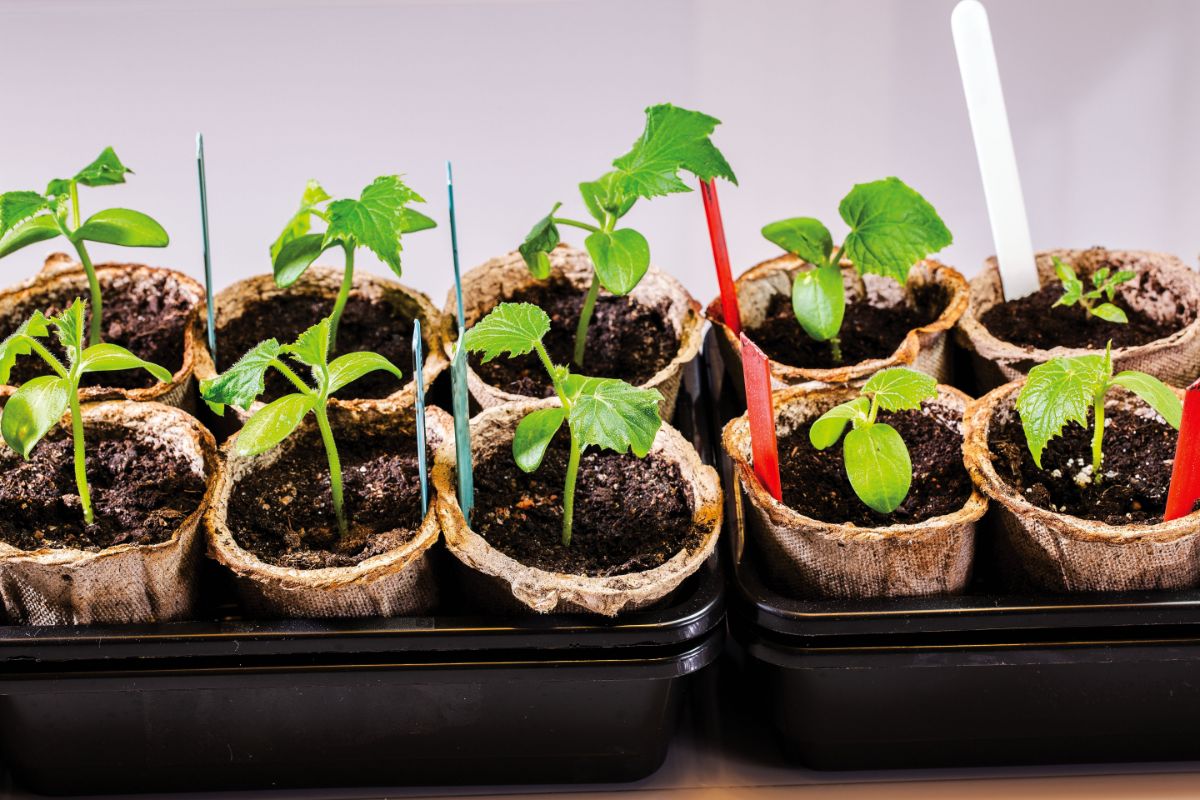
You don’t have to miss out on growing your own produce entirely, just because you don’t have a garden.
In this guide, I’ll talk to you about the process of growing cucumbers indoors, from choosing the right varieties to providing optimal growing conditions.
How To Grow Cucumbers Indoors
Choosing The Right Varieties
When it comes to growing cucumbers indoors, selecting the right variety is crucial.
Look for cucumber varieties that are specifically suited for indoor cultivation. These varieties are often labeled as “patio” or “bush” cucumbers, as they tend to have compact growth habits.
Some popular indoor cucumber varieties include ‘Bush Champion,’ ‘Patio Snacker,’ ‘Spacemaster,’ and ‘Diva.’ These varieties have been bred to thrive in containers and have a shorter maturation period.
Providing Adequate Light
One of the most important factors for successful indoor cucumber growth is providing sufficient light.
Cucumbers require at least 8-10 hours of direct sunlight daily. The kitchen window can be a great spot to grow cucumbers, as long as it gets plenty of sunlight, of course. I find that my produce really thrives in the kitchen window.
If natural light is limited, you can use fluorescent or LED grow lights to supplement the sunlight.
Position the lights close to the plants and adjust their height as the cucumbers grow to ensure an even distribution of light. It is recommended to use a combination of blue and red spectrum lights to promote healthy foliage and fruiting.
Selecting The Right Containers
Cucumbers have extensive root systems, so it’s crucial to choose deep containers that allow for proper root growth.
Opt for containers that are at least 12 inches deep and have drainage holes to prevent waterlogging.
Consider using self-watering containers or grow bags that provide adequate drainage while retaining moisture. These containers are convenient for indoor gardening and help maintain a consistent level of moisture for the cucumbers.
Soil And Fertilizer Requirements
Cucumbers thrive in loose, well-draining soil rich in organic matter. Use a high-quality potting mix that provides good drainage and moisture retention.
You can enrich the soil further by adding compost or well-rotted manure.
Additionally, cucumbers are heavy feeders, so regular fertilization is necessary. Apply a balanced, water-soluble fertilizer every two weeks to provide essential nutrients. A fertilizer with an N-P-K ratio of 10-10-10 or 20-20-20 is suitable for cucumbers.
Watering And Humidity
Cucumbers require consistent moisture to grow properly, but they are susceptible to root rot if overwatered. Water the plants deeply whenever the top inch of the soil feels dry.
Avoid splashing water on the leaves to prevent the development of fungal diseases. Maintain a moderate level of humidity in the growing area by using a humidifier or placing trays of water near the plants. You can also mist the leaves occasionally to increase humidity.
Temperature And Air Circulation
Cucumbers thrive in warm temperatures between 70-85°F (21-29°C). Avoid exposing them to extreme temperature fluctuations, as it can stress the plants.
Adequate air circulation is essential to prevent diseases, so ensure proper ventilation by using fans or opening windows.
However, avoid placing the plants in drafty areas as cold drafts can harm them. Aim for a well-ventilated space with a consistent temperature for optimal growth.
Support And Pruning
To encourage healthy growth, consider giving your cucumbers a sturdy support in the pot that they’re in – bamboo sticks usually work well.
As the plants grow, regularly prune the side shoots to focus energy on fruit production. Pruning also helps improve air circulation and reduces the risk of diseases.
Train the main stem to grow vertically and remove any competing branches to maintain an organized and productive plant.
Pollination
Cucumbers require pollination to produce fruits. You’re unlikely to have an abundance of bees or other pollinators indoors, so you will need to hand-pollinate the flowers.
To do this, gently transfer pollen from male flowers to female flowers using a small brush or cotton swab. Female flowers are distinguishable by the small fruit forming at their base.
Pollination is essential for fruit development, so ensure you provide the necessary assistance to your indoor cucumber plants.
Pest And Disease Management
Indoor cucumber plants are relatively less prone to pests and diseases compared to outdoor ones. However, common pests like aphids, spider mites, and whiteflies can still be a nuisance.
Regularly inspect the plants for signs of infestation and use organic insecticidal soaps or neem oil to control them.
Proper sanitation and good air circulation can also help prevent disease outbreaks. If you notice any signs of disease, remove affected leaves or fruits promptly to prevent further spread.
Harvesting And Storage
Cucumbers are typically ready for harvest within 50-70 days, depending on the variety.
Harvest the cucumbers when they reach the desired size and color. Regularly picking the fruits also encourages the plant to produce more.
Use a sharp knife or pruning shears to cut the cucumbers carefully, leaving a short stem attached.
Store freshly harvested cucumbers in the refrigerator, where they can stay fresh for up to a week.
If you want to keep them for longer, consider pickling them instead.
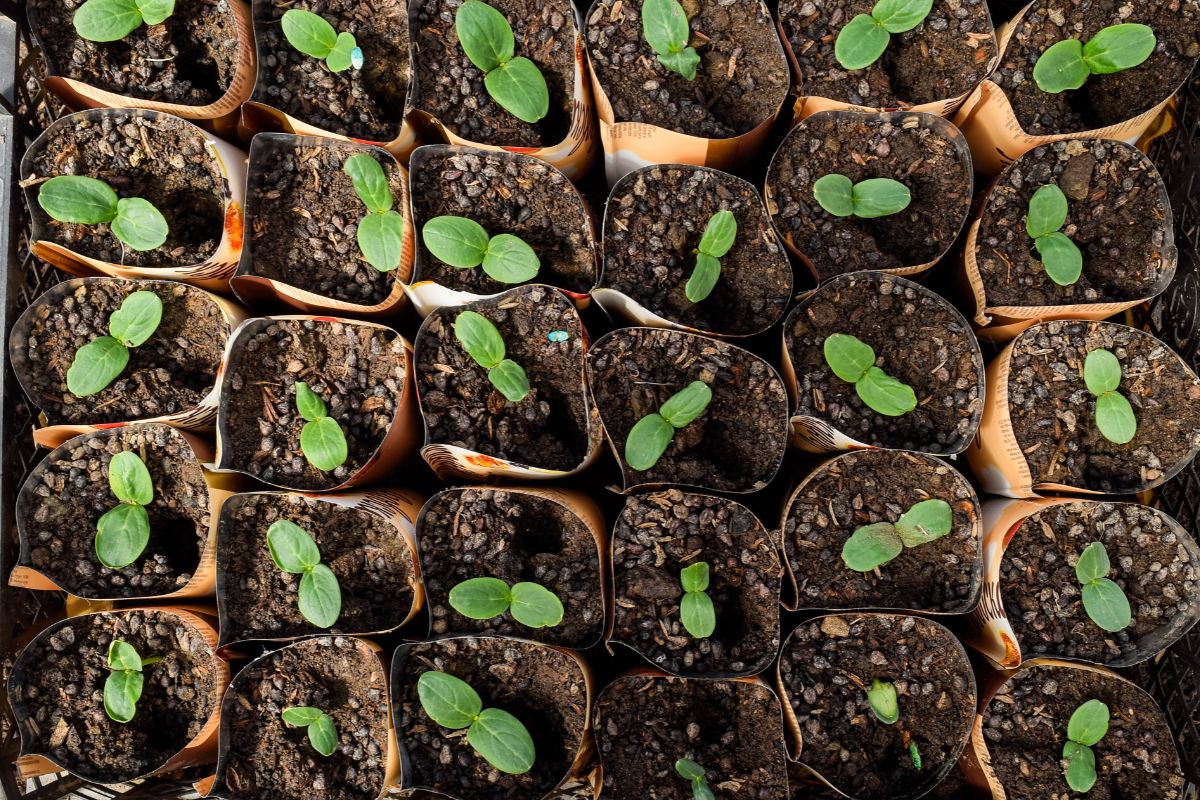
Common Problems When Growing Cucumbers Indoors
In my experience, the biggest problems that can arise when growing your cucumbers indoors are:
Lack Of Pollination: As I mentioned, it’s very unlikely you’re going to have bees and butterflies coming into the house to do this for you, so it’s important to know how to do it yourself.
As long as you’re aware that you’ll need to pollinate the cucumbers and know how to do this (scroll up for a reminder of the instructions), you’ll be fine.
Lack Of Adequate Light: The other main problem is a lack of adequate light. If the spot you’re attempting to grow your cucumbers doesn’t get enough natural sunlight, your cucumbers are going to struggle to grow.
Luckily, you can use a grow light if this is the case, to overcome this issue.
Growing Cucumbers Indoors: FAQs
Can You Grow Cucumbers On A Windowsill?
Absolutely, I often find my produce grows best on a windowsill. As long as the window gets plenty of natural light, it can work well.
Do You Need To Pollinate Indoor Cucumbers?
How Long Does It Take To Grow Cucumbers Indoors?
Cucumber seeds will generally start to germinate indoors after 5-7 days and the growth period will largely be the same as growing a cucumber outdoors, as long as the conditions are right.
Final Thoughts
If you don’t have a garden, don’t fret – you can still grow cucumbers indoors.
There are a few things to consider, like pollinating the cucumbers yourself, and ensuring there’s adequate light, but as long as you’re prepared to do that, you can still enjoy a good crop of cucumbers.
- Can You Grow Bell Peppers Indoors? A Guide For New Gardeners - November 14, 2023
- Composting Basics: Can You Compost Mushrooms? - November 6, 2023
- A Gardener’s Guide To Growing Carrots In Raised Beds - November 1, 2023

